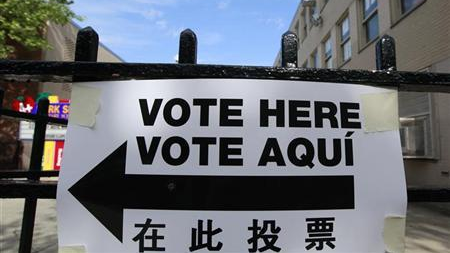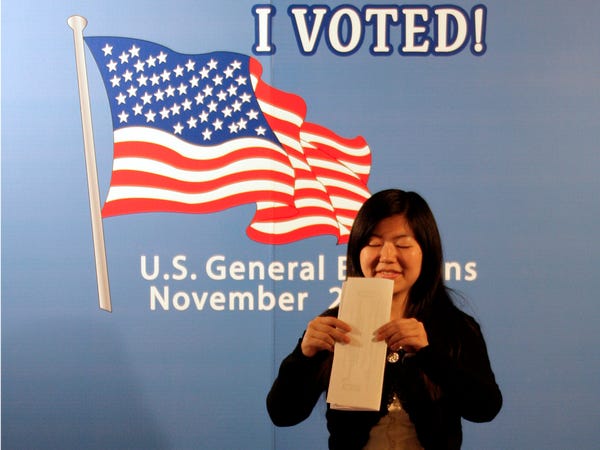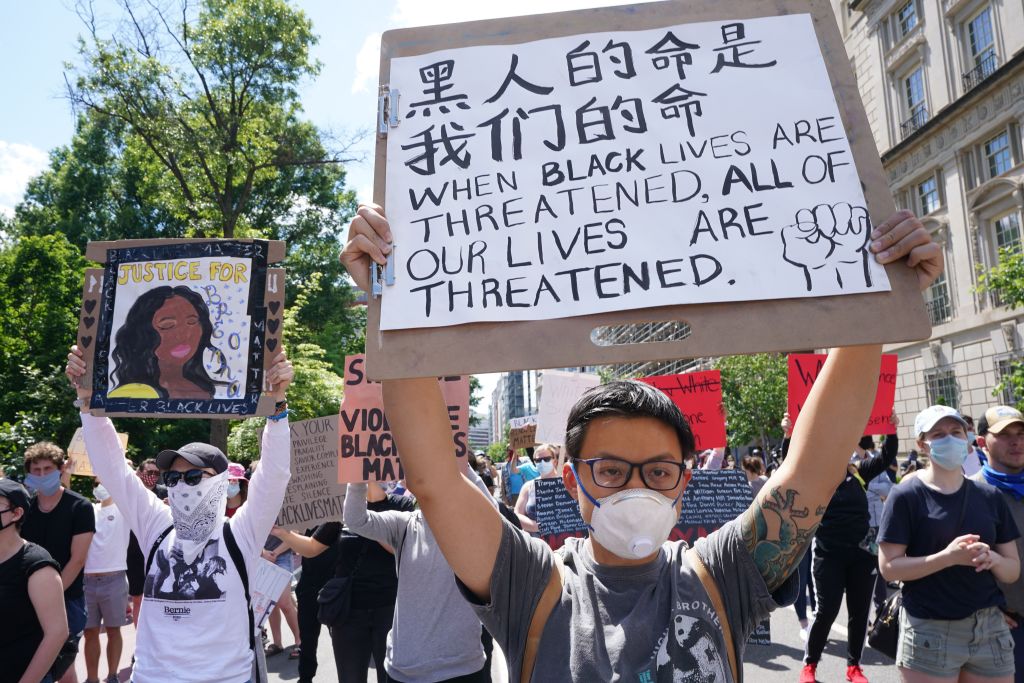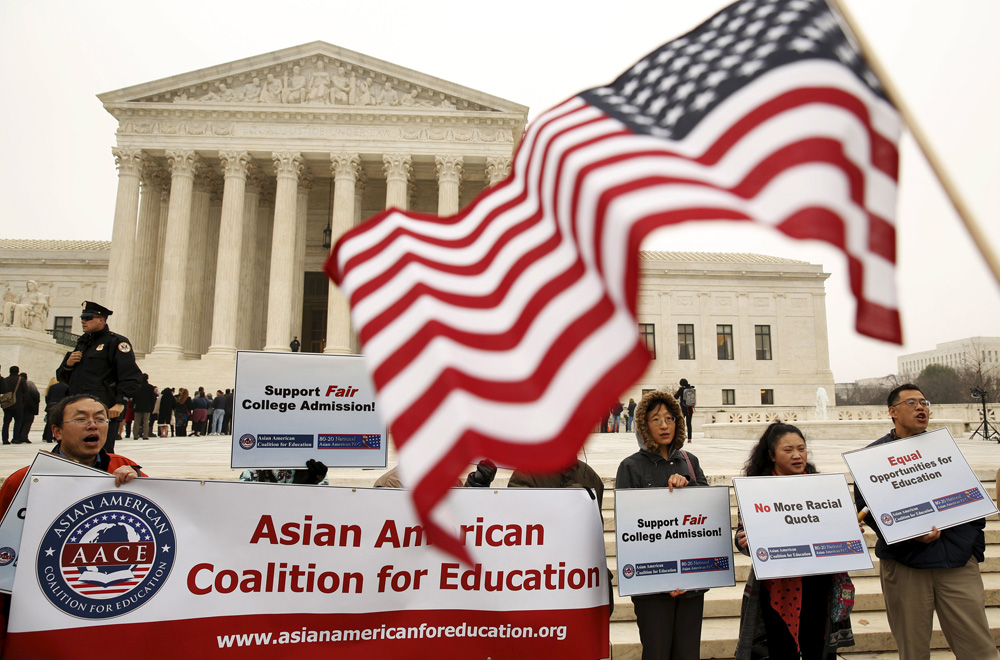
"I'll vote most likely Biden, not because I like him but because I'm fed up with Trump," said Alden, an American-born Chinese in his 30s living in the second largest U.S. state of Texas. He didn't vote in the previous presidential election because he didn't think Hillary would lose.
On the one hand, voting in a traditionally solid Republican stronghold doesn't matter as much as heading to the polls in a swing state. On the other, like many first-generation Asian Americans, who moved to the U.S. in the 1980s, his parents and grandparents aren't keen on political engagement.
The 2020 election year, however, poses a different picture. Many young Asian Americans feel inclined to vote in the wake of a spectrum of social problems laid bare by the pandemic, the Black Lives Matter movement, the surging gun violence and other disconcerting trends.
Asian Americans nowadays usually have more education and economic success than White Americans even, according to James Rae, professor of politics at California State University. Over the decades, they've increasingly integrated into mainstream American society and become more politically active.

A woman closes her eyes as she casts her vote in a mock ballot at a U.S. embassy election party in Beijing, China, November 5, 2008. /Reuters
A woman closes her eyes as she casts her vote in a mock ballot at a U.S. embassy election party in Beijing, China, November 5, 2008. /Reuters
In 1965, when the U.S. Congress passed the Immigration and Nationality Act, Asians stood for less than one percent of the American population. Over half century later, this population has grown exponentially. It reached 11.9 million in 2000, making up for some four percent of the country's population, according to the U.S. Census Bureau. And in 2019, it nearly doubled to around 22.9 million, or 6.9 percent of the U.S. population.
The demographic boom has brought about an expansion of the Asian electorate. A study by the Pew Research Center this May reveals that between 2000 and 2020, "the number of Asian American eligible voters more than doubled, growing by 139 percent." That's already higher than that of the fast-growing Latino or Hispanic voter population (121 percent), and an even more staggering growth rate than that of the black and white electorates, standing at 33 percent and seven percent, respectively. They constitute "the fastest-growing racial or ethnic group in the U.S. electorate," the study concludes.
That will inevitably precipitate a change to the U.S. political configuration with the "one man, one vote" system. In the 1980s, Asian Americans largely supported the conservative GOP, but gradually leaned toward Democrats over a decade later. In 1992, George H.W. Bush won 55 percent of Asian American votes. The decade thereafter witnessed a massive naturalization of Asian people in a time of economic bust. The year of 2012 saw a major shift with 73 percent of them voting for Barack Obama.
Four years later, a more evident divide appeared when 65 percent voted for Hillary Clinton while less than 20 percent for Donald Trump.

People protesting the death of George Floyd hold placards up at Lafayette Square next to the White House, in Washington, D.C., U.S. /AFP
People protesting the death of George Floyd hold placards up at Lafayette Square next to the White House, in Washington, D.C., U.S. /AFP
Since then, Americans of Asian descent have started showing a strong partisan attachment. This phenomenon could be partly explained by the fact that Asian Americans are the best-educated and the highest-income group in the U.S.
Over half of this cohort hold a bachelor's degree or higher. News that students hailing from China or South Korea win a spot in the Ivies often hit local headlines.
Asian Americans also play a role in reshaping the cream-of-the-crop industry in the U.S. A report from the census bureau in 2017 reveals that among the hi-tech workforce in the Silicon Valley, 26 percent were from India, and 16 percent China, overwhelming 31 percent of those from California and other states.
With a median household income of roughly 80,000 U.S. dollars in 2020, they earn more than the average American families, which stands at 64,000 U.S. dollars, according to statistics from the U.S. Census Bureau. Among the eligible voters, their income is even higher – 105,000 U.S. dollars annually, while white, black and Hispanic eligible voters all have their median household incomes below 80,000 U.S. dollars.

Asian Americans protest against income inequality in Washington, D.C., U.S. /Reuters
Asian Americans protest against income inequality in Washington, D.C., U.S. /Reuters
Affected by the Eastern culture, usually they are satisfied with their lives and finances, and tend to shun state politics. As people with higher educational and career attainment accompanied by greater income are more passionate about civil participation, Asian Americans are no exception.
The voter turnout rate among this population shows a slow ascension – from 47 percent in 2012 to 49 percent in 2016. Nonetheless, that's a fair leap compared with 2010 when their turnout rate was merely 31 percent. Experts expect a higher turnout for the upcoming election. In the 2018 mid-terms, Asian American and Pacific Islanders (AAPI) represent at least five percent of all eligible voters in 27 congressional districts across 11 states.
At the National Civic Leadership Forum in the fall of 2019, more 70 different AAPI organizations called for full-scale civic engagement notably voter registration and political participation at all levels. Historically, neither Republicans nor Democrats would tailor policies to woo Asian Americans, but this year they may need to focus on them.
Over half of all Asian Americans live in California, New York, and Texas. As the first two states are perpetually blue, the bet might be on young and middle-aged Texans of Asian descent like Alden, in particular as college-degree holders, techies, as well as the diversified demographics are turning the deep-red state into blue.